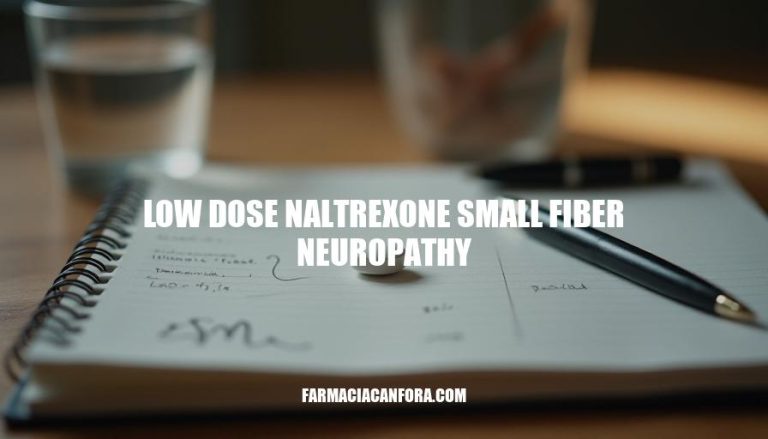


Low dose naltrexone (LDN) is used to treat opioid addiction, but it’s also being studied for chronic pain. Small fiber neuropathy (SFN) is a condition that causes burning pain, tingling, and numbness due to damaged nerve fibers. Research shows LDN can help reduce inflammation and pain in SFN patients, offering an alternative to opioids.
Studies have been promising, with many patients experiencing less pain and improved quality of life.
Low-dose naltrexone (LDN) interacts with small fiber neuropathy by modulating the immune system and reducing inflammation. LDN, typically administered at doses of 1.5 to 4.5 mg, works by blocking opioid receptors, which paradoxically leads to an increase in endogenous opioids and opioid receptors. This increase can help modulate pain and inflammation.
Mechanisms of Action:
Opioid Receptor Blockade: LDN blocks opioid receptors, leading to a compensatory increase in endogenous opioids.
This increase can help reduce pain and inflammation.
Immune Modulation: LDN modulates the immune system by inhibiting the production of pro-inflammatory cytokines such as IL-6 and TNF-alpha. This modulation can reduce inflammation and potentially alleviate pain associated with small fiber neuropathy.
Microglial Cell Activity: LDN targets microglial cells, which play a role in chronic pain. By modulating microglial activity, LDN can reduce neuropathic pain.
Clinical Trials:
Vertex Pharmaceuticals Study: A Phase 2, randomized, double-blind, placebo-controlled study evaluated the efficacy and safety of VX-150, a Nav 1.8 blocker, in treating pain caused by small fiber neuropathy.
The study aimed to assess the change in pain intensity and safety of VX-150.
Dartmouth-Hitchcock Study: A small, randomized, double-blind, placebo-controlled crossover trial investigated the efficacy of LDN for treating painful diabetic neuropathy. The study focused on LDN’s ability to enhance the body’s natural pain-relieving mechanisms and decrease inflammation.
Case Studies:
Mayo Clinic Connect: A patient reported significant improvement in foot neuropathy pain after using LDN for two weeks. The patient experienced reduced pain levels and fewer side effects compared to other pain medications.
Personal Experience: Another patient shared their experience with LDN, noting a reduction in neuropathic pain and improved quality of life.
The patient highlighted the importance of LDN in managing chronic pain without the need for opioids.
These examples illustrate the potential of LDN in managing small fiber neuropathy by modulating the immune system and reducing inflammation. Further research and clinical trials are needed to fully understand its efficacy and safety.
Small fiber neuropathy, a condition characterized by burning pain, tingling, and numbness due to damaged nerve fibers, is being studied as a potential treatment using low-dose naltrexone (LDN). Research suggests that LDN can help reduce inflammation and pain in patients with SFN, offering an alternative to opioids.
Clinical trials have shown promising results, with patients experiencing less pain and improved quality of life. However, more research is needed to fully understand LDN’s efficacy and safety.
Case studies have also reported significant improvements in SFN symptoms after using LDN, including reduced pain levels and fewer side effects compared to other pain medications.
While these findings are encouraging, it’s essential to consult with a healthcare professional for personalized advice on using LDN for small fiber neuropathy. They can help determine the best course of treatment and ensure safe use of this medication. Further research is necessary to confirm LDN’s potential benefits and establish its place in treating SFN.